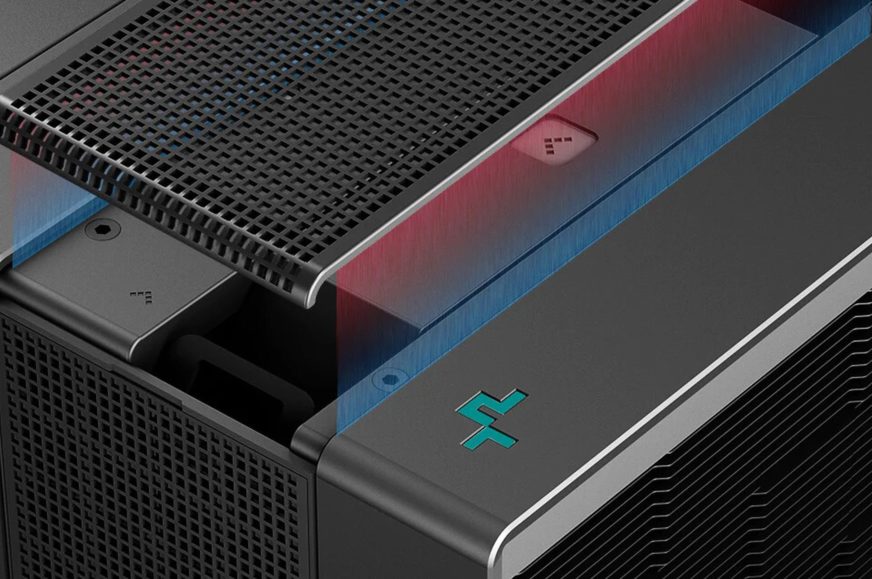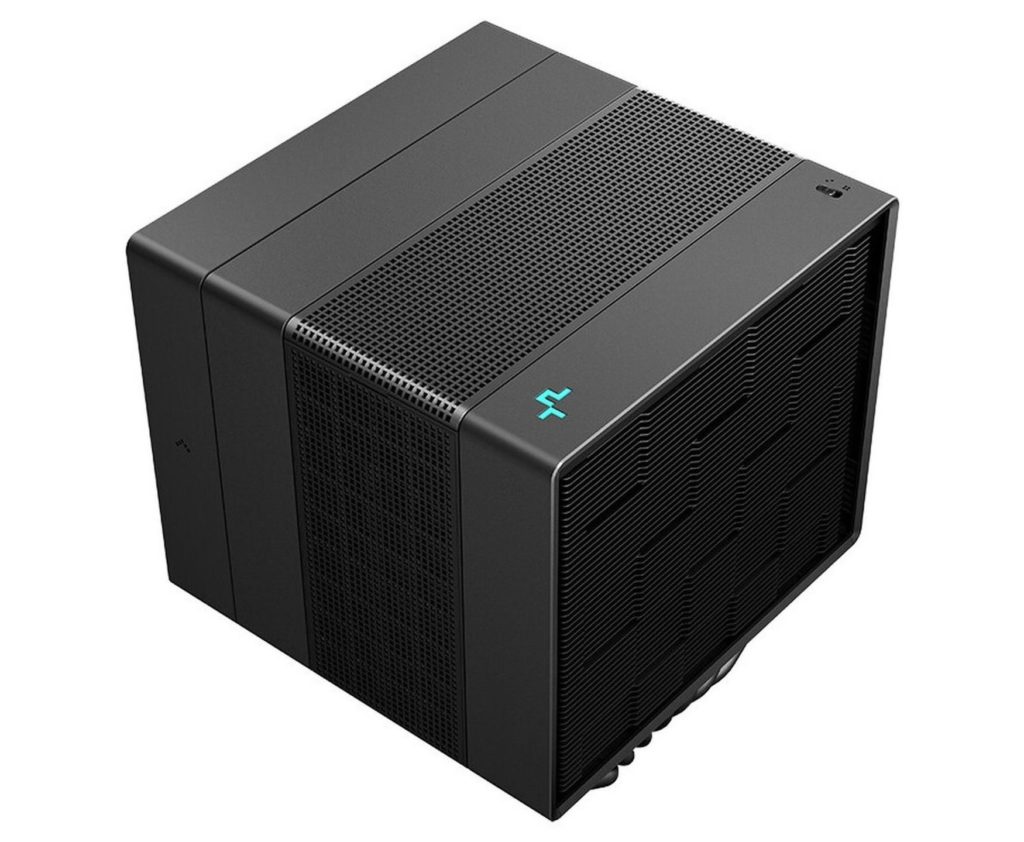DeepCool Assassin IV
DeepCool wasn’t afraid to experiment and moved the intake fan to the exhaust position in their line of the most powerful tower CPU coolers (Assassin). This was done for the sake of, among other things, 100% memory compatibility, which is very rare in wide coolers. However, such a change in the airflow pattern through finning will also have an impact on cooling efficiency. The latter is improved in Assassin IV, for example, by a sealing shroud.
New DeepCool CPU cooler from the Assassin series, the IV, will be released soon. It will be a dual-tower design with two “U” shaped heatpipes running through it. What makes this design remarkable, or different compared to others, is the fan placement. As is usual with heatsinks with two towers, two fans are used. While one (140mm) is traditionally in the center, the other exhausts from the rear tower instead of pushing air into the front tower as in competing models.
The advantage of such a solution, using the rear position at the expense of the front, is mainly in better compatibility with memory (RAM). Wide coolers usually clash with those, unless it’s the Cryorig R1 Universal, which has a low-profile fan on the front tower in addition to a rotated heatsink away from the DIMM slots .
The Assassin IV will be a wide (147mm) cooler, but stretching more to the left side, to the system fan on the case’s exhaust. Even in these locations, on high-end platforms with memory slots on both sides of the socket, collisions can occur, but with the target customer group in mind, it shouldn’t be common. Additionally, the rear fan can be moved upwards, but then again, sooner or later you will bump into the side panel of the case. Even so, with the fan in its usual position, the Assassin IV with 164 mm will be quite tall.
The Assassin IV cooler has a radiator interwoven with seven 6mm heatpipes and uses two fans to cool the fins, one 120mm (DF12) and one 140mm (DFr14) in the middle, between the towers. The larger of the pair of fans makes its debut on this cooler. This fan has a claimed speed range of 500–1700 rpm, in which according to the parameters it reaches up to 134.4 m3/h. Centrally, with a switch on the top, it is also possible to select between high-performance and silent modes. In silent mode, the maximum speed of both fans is limited to approximately 1350 rpm.
Moving the typically front fan to the exhaust also means that the fins on the front tower will be in a less turbulent environment. At this level, due to the laminar airflow circulation, the cooling efficiency is more likely to decrease compared to the traditional scheme (due to the fact that the mixing of hot and cold air molecules will be weaker), but on the other hand, there is also one element that will only increase the TDP. Because of the tunnels around the finning, it won’t be wasted on the fin path as much as with more “open” coolers. This is beneficial for more even airflow through the heatsink, which naturally increases cooling performance.
We can’t give you the release date for Assassin IV yet, but you won’t be waiting much longer. And of course, we’ll be covering the cooler in our tests.
English translation and edit by Jozef Dudáš
- Contents
- DeepCool Assassin IV














